| Follow us on Twitter to receive nutrition & health tips as well as information about upcoming events! 
|
|
Nutrition Energy
In the News!
|
|
**Upcoming Events**
Nutrition for Triathletes
Hosted By:
Brooklyn Tri Club
(All are welcome!)
When: Thurs, 6/21
Time: 7:00 PM
Where: Priority Fitness
Presenting:
Lauren Antonucci, MS, RDN, CSSD, CDE, CDN
|
Join Our List
 |
| Become a fan! |
| 
|
|
|
|
Water You Doing to Hydrate?
|
It's time once again to talk about hydration!
Here at Nutrition Energy, we
encourage everyone to hydrate all year long, but we up the conversation when the weather gets warmer. We know you know that the heat and humidity rising cause us to lose even more water than normal, so yes, you need to drink more water to stay hydrated and feeling your best over the next few months. But that's not all, especially for you athletes out there! We can't always rely on our thirst cues to stay hydrated since it is inadequate for our body's needs. According to the Department of Physiology in the University of California, San Francisco, thirst has evolved to become a motivated behavior, and in turn has a limit of effectiveness. In addition, when active - especially outdoors and in the hot sun - your body loses not only water, but also other important electrolytes, including sodium, chloride, potassium, magnesium, and calcium, that are
critical for your cells to function. While all of the electrolytes are important, the main one we're concerned about replacing during exercise is sodium, since it is lost at a higher concentration in your sweat. While water is a great hydrator for our all day drinking needs, we recommend adding sports drinks when your sweat rate is increased and electrolyte and fluid losses are high. Sports drinks replenish not only fluid/water, but also electrolytes (including sodium), and carbohydrates to make sure you are replenishing what you loose and to aid your GI tract in absorbing fluids adequately. By staying properly hydrated before, during, and after your workout, you can reduce the risk of dehydration, heat illness, muscle cramps, and improve performance during the physical activity. No one wants to deal with that!
How much and when should I hydrate?
You may have heard someone recommended that you drink "8 x 8" fluid oz glasses of water each day. However, everyone's body is different, and one recommendation will not adequately hydrate all. Needs vary based on body size and weight, environmental conditions and activity level. Therefore, your fluid requirements will be different from your neighbor's. So how much should you really be drinking? Here are some guidelines by the American College of Sports Medicine that you can use to tailor to your own body's needs:
Daily:
- Men need a total of 3.7L (or half your body weight in fluid oz/day)
- Women need a total of 2.7L (or half your body weight in fluid oz/day)
Note: This recommendation is NOT just water, but also the water contained in your food. Most people meet approximately 20% of their needs through food.
Before Exercise:
- Most people should drink 10-20 fluid oz 4 hours prior to exercise
- Then top off with an additional 8-16 fluid oz 2 hours prior to exercise
During Exercise:
- Drink to replace, but do not exceed, sweat losses
- To have a more accurate assessment of your specific fluid needs we recommend that you weigh yourself before and after exercising to calculate how much fluid loss took place
After Exercise:
- Fully replace fluid and electrolyte losses
- For every pound lost due to sweat during exercise, drink 24 oz of fluid over the next 2-4 hours.
- Add a salty food or snack to help you rehydrate
Tip: Consume salty snacks or foods including pretzels, tomato juice, soups, or jerky to replace the sodium losses. This will also stimulate your thirst increasing your drive to drink and helping you to rehydrate naturally.
Salt Can Help!
Salt often gets a bad reputation for its tendency to increase blood pressure and cause fluid retention/swelling. These claims are true when your salt consumption is too high, especially when your produce and fluid intake are inadequate. However, when engaging in physical activity/exercise for over
two hours, at high-intensity and/or sweating excessively, it is easy for your sodium levels to become diluted if you drink only plain water. Don't worry, you're in luck, salt supplements are there to help! The below products are just a few examples of the many you can find to help you replace
lost sodium and depending on the brand, many contain other electrolytes too. Keep in mind, though, the supplements must be taken with an adequate amount of water to avoid a concentrated saline solution in your gut, which would increase more water loss and we don't want that!
Tip: For a tablet that has 180mg sodium, consume with 8 fluid oz water.
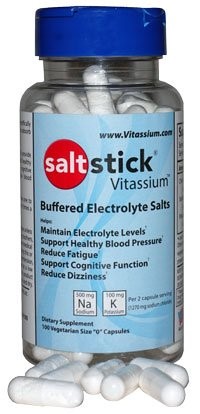 Salt stick includes sodium, chloride, and potassium. Take o
ne capsule
-which contains 250mg of sodium -before your 90+ minute workouts in the heat. Wash it down with 10-12 fluid oz of water! Salt stick includes sodium, chloride, and potassium. Take o
ne capsule
-which contains 250mg of sodium -before your 90+ minute workouts in the heat. Wash it down with 10-12 fluid oz of water!
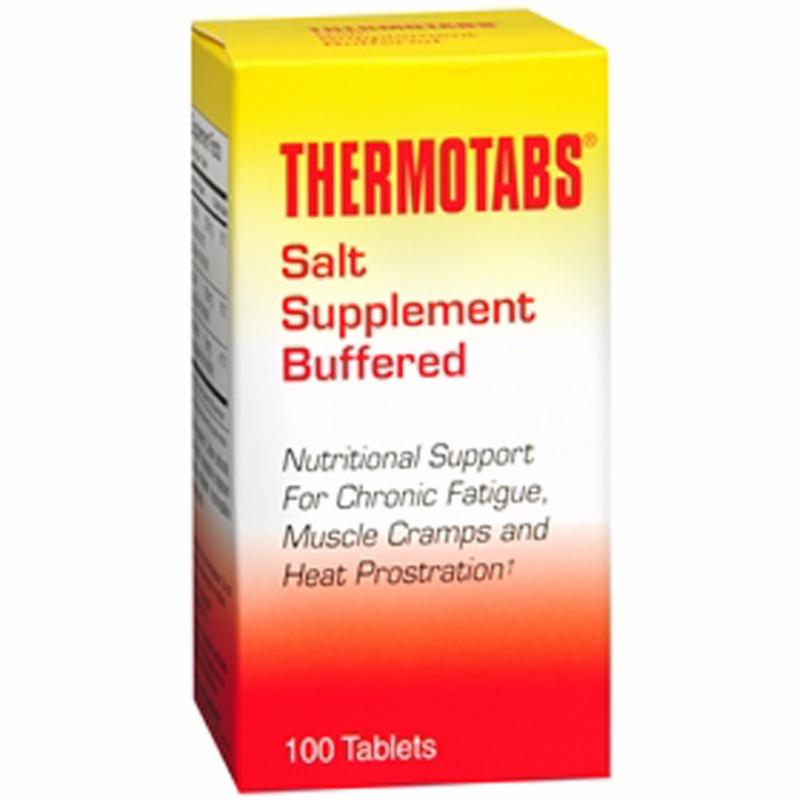 Thermotabs provide sodium, chloride and potassium. Since each tablet contains 180mg of sodium, take it with 8 fluid oz of water. You can try taking one with your pre-workout meal, or may need one every 30-45 minutes during long duration sweat sessions in the heat (think marathoners, long course triathletes, all day tournament soccer and tennis players etc) Thermotabs provide sodium, chloride and potassium. Since each tablet contains 180mg of sodium, take it with 8 fluid oz of water. You can try taking one with your pre-workout meal, or may need one every 30-45 minutes during long duration sweat sessions in the heat (think marathoners, long course triathletes, all day tournament soccer and tennis players etc)
 This hydration mix from a brand called Skratch includes sodium, magnesium, potassium, calcium, iron, carbohydrates, and vitamin C. It comes in several flavors and is free from artificial sweeteners, coloring and synthetic flavoring agents. One serving provides 360mg of sodium, and 21 grams of carbohydrates, so should be mixed with 16 fluid oz of water and consumed just prior to and/or during long duration exercise.
 Gatorlytes by Gatorade contains 780mg of sodium and 400mg of potassium. You'll want to mix this into a sports drink, since the sodium content is high. We recommend mixing this powder with 20-24 fluid oz of the Gatorade thirst quencher. This product is great for those who sweat a lot and participate in rigorous, long duration activities. Gatorlytes by Gatorade contains 780mg of sodium and 400mg of potassium. You'll want to mix this into a sports drink, since the sodium content is high. We recommend mixing this powder with 20-24 fluid oz of the Gatorade thirst quencher. This product is great for those who sweat a lot and participate in rigorous, long duration activities.
|
|
SEASONAL PRODUCE Made Fun
|
We often encourage/challenge our Nutrition Energy clients to try new fruits and veggies, eat more locally and seasonally as possible and try new recipes. Below are three great ways to do all of those things at once!
Strawberry season is upon us and the farmer's markets and grocery stores are flooding with strawberries and you should go get them! Just one strawberry has 7 mg of Vitamin C, which means 1 cup of strawberries has more Vitamin C than an orange! If you are looking for interesting ways to eat strawberries, try this recipe below.
Strawberry Banana Chocolate Chip Baked Oatmeal Snack Bars
Servings: 9
INGREDIENTS 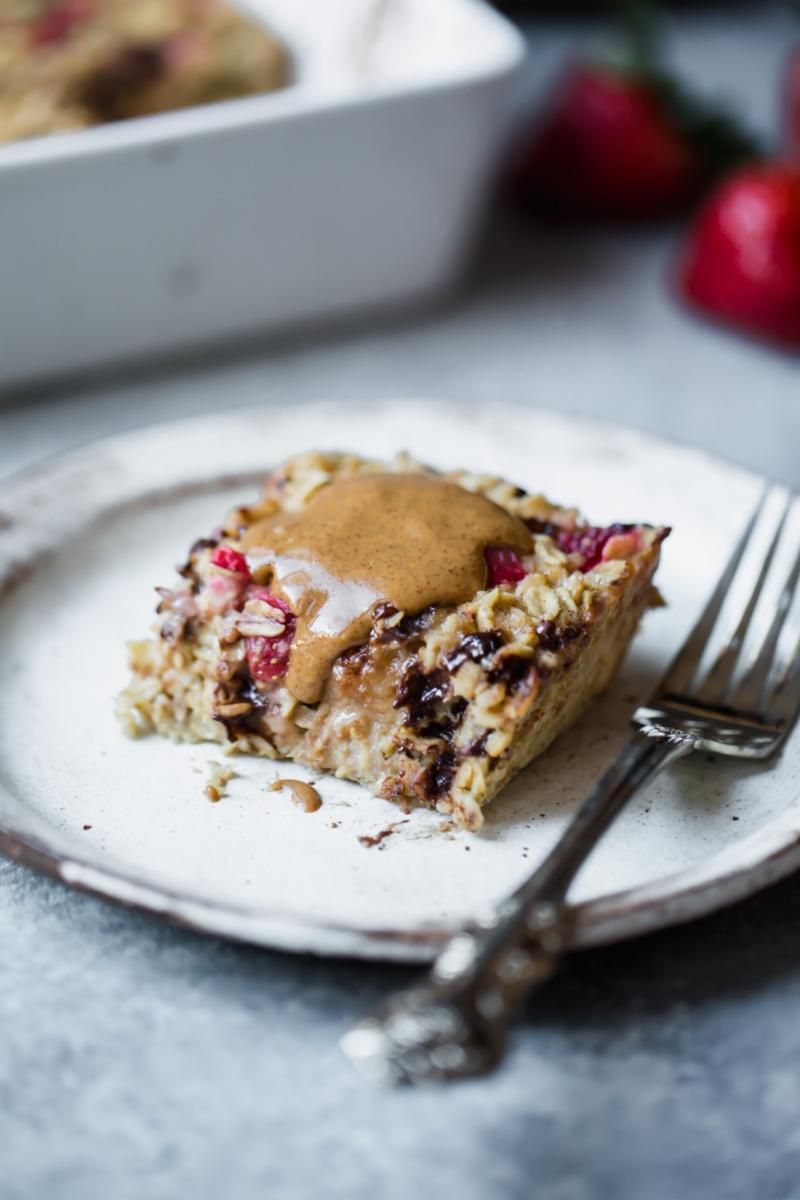
- 1 cup mashed banana
- 2 eggs
- 1 ½ cups almond milk
- 2 tablespoons melted and cooled coconut oil, melted butter or melted ghee
- 1 teaspoon vanilla extract
- 2 ½ cups old fashioned rolled oats, gluten free if desired
- 1 teaspoon baking powder
- ½ teaspoon cinnamon
- ¼ teaspoon salt
- ¾ cup diced strawberries
- ⅓ cup mini chocolate chips, dairy free if desired
INSTRUCTIONS
- Preheat oven to 350 degrees F. Spray a 9x9 pan with nonstick cooking spray.
- In a large bowl mix together mashed banana, eggs, almond milk, coconut oil and vanilla until mostly smooth. Next add in rolled oats, baking powder, cinnamon and salt until well combined. Finally, gently fold in strawberries and chocolate chips.
- Pour mixture into prepared pan and bake for 25-35 minutes until edges start to become slightly golden brown. Serve warm with a tablespoon of almond butter.
Strawberry Sorbet
Servings: 4-6
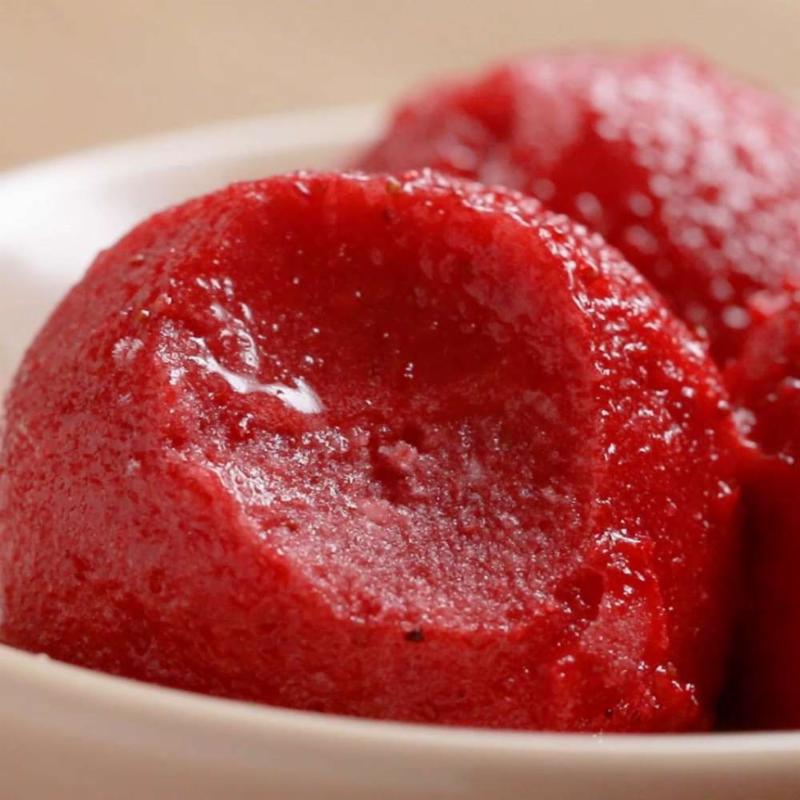
INGREDIENTS
- 1 pound strawberries
- ¼ cup honey
PREPARATION
- Hull the strawberries by using a straw to push out the stem of each strawberry.
- Cut strawberries in half and place on a parchment paper-lined baking sheet and freeze until hardened.
- Add the frozen strawberries and honey to a food processor and combine until evenly mixed.
- Transfer to a loaf pan and transfer to freezer until completely frozen.
- Enjoy!
Across from those strawberries, the asparagus is also fully stocked! Those long, green vegetables are a great source of fiber, folate, and Vitamins A, C, and K! Make sure to try this tasty recipe and get those greens in your diet!
Asparagus Fries!
Servings: 1
INGREDIENTS 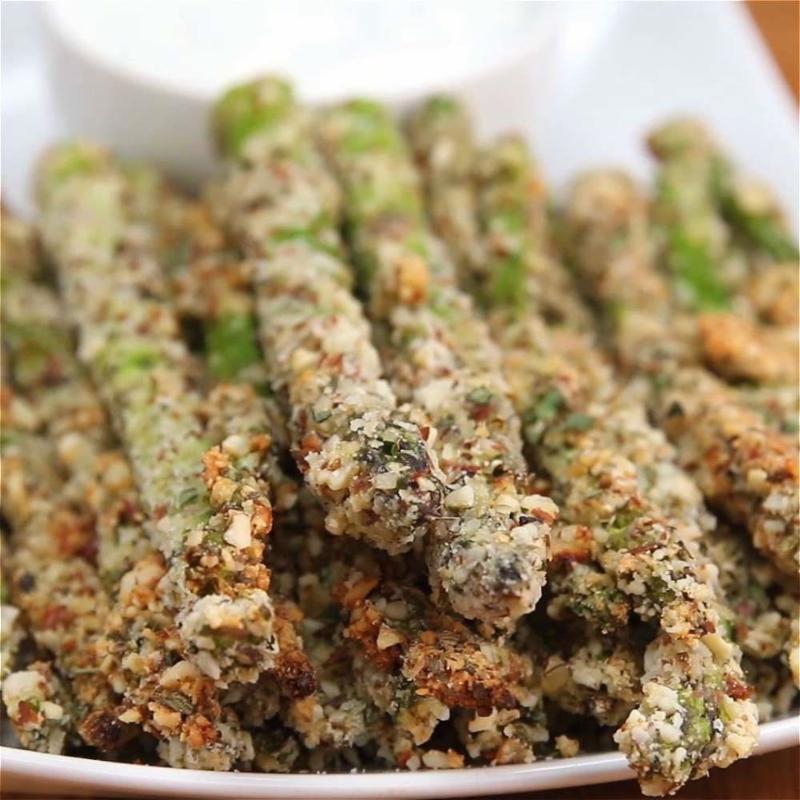
- 1 bundle asparagus
- 1 cup almonds, chopped
- 1/3 cup parmesan cheese
- 1 T garlic powder
- 2 T dried oregano
- 1 teaspoon salt
- 1 teaspoon pepper
- 2 eggs
INSTRUCTIONS
- Preheat oven to 425F
- Cut off about 1-2 inches of asparagus ends. Set aside.
- In a large bowl combine crushed almonds, parmesan, garlic powder, oregano, salt, and pepper.
- Whisk eggs in a shallow bowl or dish.
- Dip asparagus in eggs, coating evenly, and then toss with the crushed almond mixture.
- Place on a baking sheet lined with parchment paper in a single layer. Bake for 15-20 minutes, flipping halfway.
- Prepare dip while fries are baking. Combine all dip ingredients in a small bowl and set aside in the refrigerator until ready to use.
- Enjoy!
|
|
|
A Note from Lauren...
|
This is one of my favorite times of the year - Berry Season! Yes, luckily we can buy berries all year long, but fresh berries just picked and available at local farmer's markets taste so much better!
Last month we spoke about flavoring your water with fresh fruit and herbs. With farmer's markets having an abundance of fresh produce, you can't go wrong with any combination. AND both the water and produce count towards your hydration needs for the day!
I wanted to include some information about salt in this month's newsletter, especially with the weather getting warmer and athletes are training during heat and humidity. Salt is usually overlooked by athletes when training - which can result in fatigue and tight muscles following a session if not properly replenished with other electrolytes lost through sweat. I've included a small number of salt products to try if you haven't already found one you like. It's okay to try a few different kinds to find the one (or couple!) that's right for you.
Do you like the recipes we included this month? Are there any go-to seasonal farmer's market recipes you love? Tweet us
@NutritionEnergy
or let us know on
Facebook
!
Lauren Antonucci, Director
Nutrition Energy
|
|
|